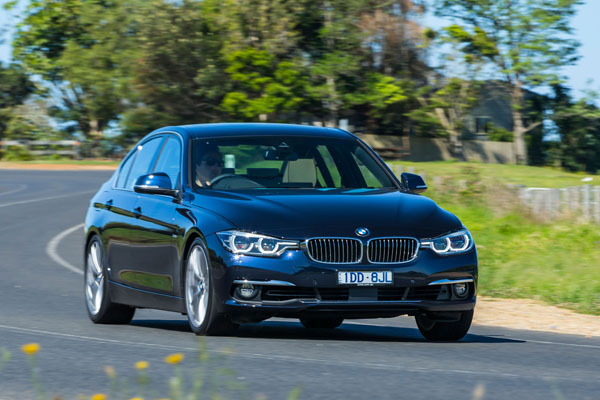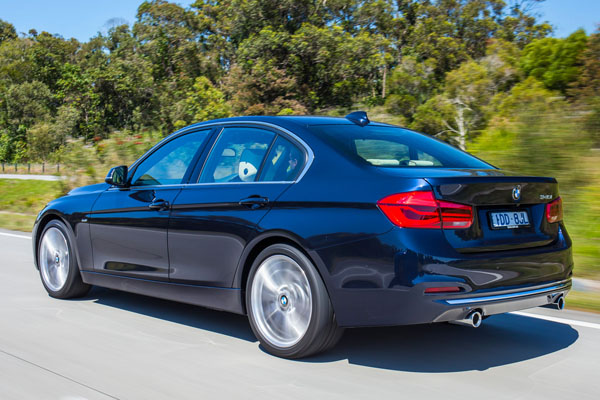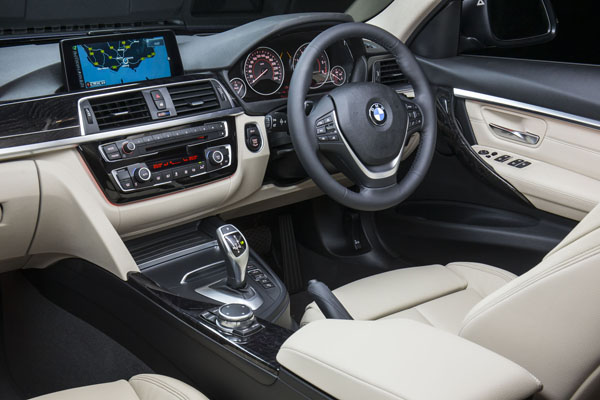
Even for motoring journalists European luxury cars are, well, a luxury. They are not an everyday occurrence. When the initial adulation wears off, familiarity sets in and so does a hint of nothing out of the ordinary.
Some vehicles, however, hold something in reserve to keep an automotive world-weary scribe interested. Such a car came into my possession recently. With time, the BMW 320d could quite easily have become a Euro Camry. It didn’t.
The latest iteration features sharper exterior design, the interior uses new material to create a premium impression, ergonomics have been upgraded and advances in BMW EfficientDynamics technology have led to gains in performance, efficiency and carbon emissions across range.
After 40 years, with around 14 million examples delivered to customers, the 3 Series now accounts for a quarter of BMW sales worldwide. In Australia, more than 110,000 3 Series models were sold in the past five years.
Of the seven variants, in Sedan and Touring (station wagon) forms, on offer in Australia, I had the lone diesel, the 320d Sedan, on short-term test.
STYLING
Great attention has been paid to making the new 3 Series appear wider, hence sportier, with a front end gaining new aprons with revised air intakes. New-design headlights and striking LED daytime running lights only go to emphasise this.
Once again, the sculpted rear apron and standard LED rear lights emphasise the car’s width. New wheels, exterior colours and equipment options, round off choices for the new 3 Series buyer.
INTERIOR
BMW continues to focus on the driver, with easy access to all the main functions. Ergonomics have been improved further and additional chrome highlights and high-gloss surfaces give the interior an even greater look of luxury.
For example, the central control panel in the centre console comes in high-gloss black and features an ambient lighting surround given by additional chrome applications. As usual, piano black gathers dust like there no tomorrow and requires cleaning off daily to maintain the great look.
Chrome accents make the revised controls for the electric seat adjustment easier to pick out, while drink holders in the centre console now have a sliding cover. Additional storage for items such as a smartphone is positioned forward of the drink holders.
INFOTAINMENT
ConnectedDrive is standard in the new BMW 3 Series. A SIM card built into the system gives access to a wide range of services from BMW ConnectedDrive without the need for a smartphone.
Smartphone apps that have been optimised for BMW, such as Audible, GoPro and Spotify, can be used via the car’s display and control concept.
ENGINES / TRANSMISSIONS
All three four- and six-cylinder petrol engines, including the four-cylinder diesel unit in our test BMW 320d are from the new modular BMW EfficientDynamics engine family and are equipped with the latest BMW TwinPower Turbo technology, which combines good performance with excellent fuel efficiency. Carbon dioxide emissions are Euro 6 rating.
The output of the new BMW 320d benefits from further improvements in internal friction and responsiveness through the use of anti-friction bearings instead of plain bearings – up from 135 kW of its predecessor to 140 kW at 4000 rpm.
With peak torque of 400 Nm, between 1750 and 2500 rpm, the new BMW 320d sedan with eight-speed transmission returns a zero-to 100 km/h time of 7.2 seconds, two tenths of a second less than the previous 320d sedan.
SAFETY
Intelligent Emergency Call, another standard feature, comes to the aid of the occupants if the airbags are triggered in a crash. The built-in SIM card automatically transmits details on the severity of the crash, the potential risk of injury to the occupants and the vehicle’s location to the BMW ConnectedDrive Call Centre.
This information is then used to arrange emergency response while the call centre stays in contact with the occupants if desired. The manual emergency call function allows help to be summoned for other road users in emergencies.
DRIVING
Ride and handling are improved via the latest developments in damper technology, more rigid body shell mounting and a retuned steering set-up.
BMW’s Driving Experience Control can shift between four driving modes – Comfort, Sport, Sport+ and Eco Pro – which alters throttle response and transmission shift points.
Comfort is designed for the day-to-day city commute, Sport adds some spice, while Sport+ cries out for some out-and-out track time. Eco Pro reduces fuel use at the expense of performance. Nothing new here.
The standard full-colour, high-resolution head-up display shows speed, navigation instructions, music or radio list on the windscreen in the driver’s field of view.
The maker claims fuel consumption on the combined urban / highway cycle of just 4.4 litres per 100 kilometres, which corresponds to carbon dioxide emissions of 116 g/km.The test vehicle recorded 7.8 litres per 100 kilometres in town and around 4.0 litres per 100 kilometres on the open road.
SUMMING UP
At $63,800, plus on-road costs, 320d is not cheap and with any number of options could be even more. However, careful choosing could come up with a vehicle to please almost any owner. The most popular BMW should keep its top spot.
AT A GLANCE
MODEL RANGE
BMW 318i petrol sedan: $54,900 BMW 320i petrol sedan: $61,900 BMW 320d diesel sedan: $63,800 BMW 320i petrol Touring wagon: $65,300 BMW 330i petrol sedan: $69,900 BMW 330i petrol Touring wagon: $73,300 BMW 340i petrol sedan: $89,900
Note: These prices do not include government or dealer delivery charges. Contact your local BMW dealer for drive-away prices.
FEATURES
18-inch alloy wheels
Eight-speed Sport automatic transmission
Sport Line
Rear-view camera
Head-up display
Lane change warning
Driving Assistant
Surround View with top view and side view
Navigation system
Sensatec upholstery
LED headlights
ConnectedDrive Lifestyle
Real Time Traffic Information
Lights Package
Electric front seat adjustment with memory function on driver seat
Adaptive M Suspension
DAB+ Digital Radio
SPECIFICATIONS (BMW 2.0-litre turbo-diesel sedan)
ENGINE:
Capacity: 1.995 litres
Configuration: Four cylinders in line
Maximum Power: 140 kW @ 4000 rpm
Maximum Torque: 400 Nm @ 1750 rpm
Fuel Type: Petrol 95RON
Combined Fuel Cycle (ADR 81/02): 4.4 L/100km
CO2 Emissions: 116 g/km
DRIVELINE: Eight-speed Sport automatic
DIMENSIONS, WEIGHT AND CAPACITIES:
Length: 4624 mm
Wheelbase: 2810 mm
Width: 1811 mm
Height: 1429 mm
Turning Circle: 11.3 metres
Kerb Mass: 1430 kg
Fuel Tank Capacity: 57 litres
BRAKES:
Front: Ventilated disc
Rear: Ventilated disc











